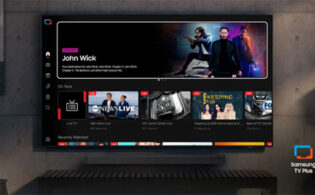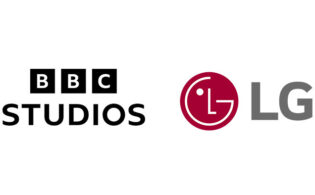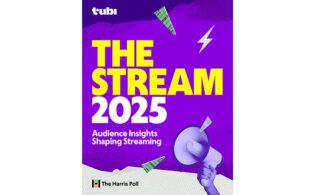Choice fatigue is real, lean-back viewing still matters, connected TV usage is gaining ground, and despite some speed bumps, the FAST sector holds a wealth of potential for IP owners—as long as you’re smart and strategic about how you approach it. Those were among the key takeaways of World Screen’s second annual FAST Festival, which convened last week to explore the opportunities, and pain points, in AVOD and FAST.
Missed any of the sessions? Catch up on-demand here.
Amid consumers’ abundant options, discoverability tools and smart curation were key themes across all the sessions, including during our wealth of keynotes and panels with platform operators.
Among the many programmers we heard from last week was Samsung TV Plus’s Jenn Batty, who oversees content partnerships in Europe and the Middle East. Batty stressed the importance of curating a lineup based on each territory’s individual needs. “Something that works in the U.K. might not work in Germany and vice versa. We look across all of the consumption, not just within Samsung TV Plus, to use data to drive our decisions on what we bring forward to our platform. We have sports, news, movie channels, entertainment, comedy, lifestyle—you name it, we have it.”
The importance of local also came up during our session with Katrina Kowalski, the senior VP of international content programming and acquisitions at the Paramount-owned AVOD and FAST channel service Pluto TV. On what works best for FAST channels, Kowalski boiled it down to programming “that is easy for people to start watching. More often than not, it’s procedural content, where you’re not having to follow a storyline, although we have seen some success in that vein as well. In terms of most successful categories, crime, comedy and classic television are top performers in almost every market. Reality is also a top category. When you start digging deeper into genres, we’ve seen significant fandoms for Westerns, paranormal, horror and true crime. Anime is having a real moment. There’s success in more traditionally broadly appealing genres and a rich interest in niche programming. It’s our goal to keep serving those fans on both sides.”
Marcos Milanez, chief content officer at Rakuten TV, similarly weighed in on the importance of paying attention to consumption trends in local markets and highlighted the role originals play in the platform’s offering. Rakuten TV has been investing in some originals, co-producing or commissioning a handful every year, Milanez noted. “We started this back in 2019, primarily with feature sports documentaries. Fast-forward to now, we’ve broadened to other genres such as reality and talent shows. We definitely don’t want to stop doing sports feature documentaries, but reality and talent shows have that stickiness in engagement and repeat viewership. They equally appeal to brands wanting to associate themselves with those originals.”
The Roku Channel has also been investing in originals, across multiple genres, as it cements its positioning as a leading source for free entertainment. Roku Media’s head of content, David Eilenberg, also oversees the Roku Brand Studio, “a unit devoted to helping advertisers tell stories that are more narrative length,” he told FAST Festival delegates in his keynote. “The 30- and 15-second spots are always going to be important to any advertisers’ plans, but we are starting to see an uptick in advertisers and media agencies wanting to be directly involved in longer-form storytelling, whether that’s in documentary, specials and perhaps going forward even in scripted series. That’s a place where the worlds of content and advertising directly overlap. We’re trying to become a good home for advertisers to come tell stories that are important to them.”
On the heels of its tremendous success in the U.S., Tubi has set out to make waves in the competitive U.K. landscape, where it is up against significant competition from other global services as well as a vibrant local BVOD segment. “There is a tendency, with both BVOD and SVOD platforms, to be quite clustered around a monoculture,” said David Salmon, executive VP and managing director of international, in his keynote session. “They’re focused on super-serving the median viewer because the way they either license their content or think about monetizing is focused on trying to have one piece of content be watched by as many people as possible. That creates a lot of concentration for demos in the middle. But it means you have these interesting, diverse demos that get underserved by any of those platforms. We’ve entered the market with a broad catalog. We’ve got 20,000 titles as a starting point. It’s already one of the largest catalog libraries in the market. Of that 20,000, there are about 4,500 movies, which is ten times what you typically find on the standard BVOD services. We’re hoping to provide amazing content discovery and a real breadth.”
That need for diversity and depth was also on display in our superpanel on independent platform operators, featuring Plex’s Scott Olechowski, wedotv’s Philipp Rotermund and Free TV Networks’ Thanasis Tsiris.
Addressing the issue of too much choice, Rotermund noted, “It is all about curation. Whether you have 30,000 hours, 100,000 hours or 10 million hours doesn’t matter. You have to give the user a guideline. This is also why FAST or linear TV has had such a renaissance all of a sudden. People have still been speaking about ‘Netflix fatigue’; I think that is still a big issue. Curation is the key, and that’s where the human factor comes in. You can have all the data, but you have to make the content accessible for the user.”
Olechowski added, “Having a ton of content is not a problem, but we need the tools, curation and means to make it personalized to that user. Having more gives you a bigger canvas to play with. But ultimately, you still need to paint a nice picture. You can’t just expect people to find this on their own. When you start getting into these deeper, longer-tail catalogs, the quality of the metadata is very different. Just getting a baseline so the recommendation systems can surface stuff is a big part of the problem we need to solve. The size is not the question. It’s more [about] these tools and how you make it discoverable.”
Tsiris agreed, noting: “This is a very big generalization, but about 80 percent of the revenue has been driven off of 20 percent of the content. On the flip side, you’ve got 80 percent of your content fighting for that bottom 20 percent of the revenue. If you get to a point where you start seeing some diminishing returns on that long-tail content, that presents a problem. Curation and new product features go a long way in solving that, but it’s how you present and get it to the customers.”
James Ross, the CEO of Lightning International, also highlighted the importance of skilled curation in his keynote session. “We look very carefully at what works well on individual platforms. We have a bouquet of channels that includes documentaries, news, music, entertainment and movies. We look at what our audience is watching on those platforms. Our music channels—of which we’ve got the Universal Music channels NOW 70s, NOW 80s, NOW Rock and NOW 90s—work well on platforms where music has captured people’s imagination. Music is interesting because it is one of those genres that people switch on and leave on. In the FAST world, we want stickiness; we want people to watch our channels, keep watching them and leave them on in the background. Then the ads get served, and we make revenue.”
Cineverse is relying on data analytics as it makes gains in the streaming universe, Chris McGurk, CEO and chairman, told FAST Festival viewers. With its 20 FAST channels, Cineverse is taking a targeted approach, McGurk said. “Each channel is targeted at a very specific fan base or branded content that’s well known, which gives us a leg up. We do a lot of analytics behind that before we launch a channel. We developed and own our own proprietary streaming and content management technology called Matchpoint. A part of that is called Matchpoint Insights, which gives us a huge analytical database to develop channels and give the platforms and consumers what they want to see when they want to see it.”
Using analytics—when you can get them—was a key theme of our superpanel on how distributors of scale should approach setting up and curating FAST channels with BBC Studios’ Beth Anderson, ITV Studios’ Graham Haigh and All3Media International’s Amanda Stevens.
“It varies by platform,” Haigh said. “It’s not transparent; it’s very insular. We get data for our own channels and very little context around that. I won’t say it’s enough, but it’s sufficient for scheduling a channel, but you’re doing it with your arm tied behind your back. If we can’t effectively schedule a channel based on the most data we can access and have that transparency across not just our channels but all of the universe, then nobody wins. If we could generate and schedule a more effective channel that drives more viewing, that would benefit us and our platform partners.”
Stevens agreed, noting, “There is a lack of consistency across all platforms about what’s being reported and the cadence of how often you get that reporting. We are constantly tracking highest- and lowest-rating shows on any given channel, the strongest dayparts if you want to launch new content and performance over time. But, of course, it could always be better.”
Anderson added, “In the industry’s defense, the cake isn’t baked yet. FAST goes beyond an EPG. It’s not necessarily the only way to engage with a linear feed. As a result, there’s just a lot of technical development going on in this business. It makes sense that there isn’t a consensus on the metrics provided. Everyone is operating while also building. As an industry, we need to identify some key performance indicators. Revenue is paramount, but time spent is also the most valuable metric. In the U.S., there are over 1,900 FAST channels live today. It’s not necessarily about chasing the highest number of views on a specific channel at a specific moment. [It’s about] consistency, sustainability, making sure that we’re carrying through the right channel identity that can appeal to an audience on a loyal, long-term basis. That creates a much richer channel experience and provides more opportunity to introduce new IP to audiences.”
Chase Brisbin, recently elevated to executive VP of international SVOD sales and head of global channels at Lionsgate, discussed how that studio is bringing its catalog to AVOD and FAST, including with MovieSphere, the first FAST channel in the U.S. to be measured by Nielsen. “Our research team believes that all ships will rise if we start to share, collaborate and standardize more. It gives us more granularity to that programming piece. It fills in their gaps. It helps us benchmark platforms. It also helps us get access to demographic information, which we don’t typically get from some of the platforms. This helps us see the bigger picture.”
Movies are proving to have significant traction in the AVOD and FAST space, as our genre spotlight with VA Media’s Mark Ashbridge, Candlelight Media Group’s Scott Wiscombe and Nicely Entertainment’s Scott Kirkpatrick highlighted.
Nicely has seen a “tremendous uptick in our AVOD numbers,” said Kirkpatrick of the independent producer and distributor. “We’ve prioritized AVOD as a rights category and prioritized how we’re going to be strategically thinking about AVOD moving forward.”
Wiscombe added: “As discoverability gets easier and that revenue continues to get bigger, we’re going to see more originals for AVOD, FAST or YouTube.”
For VA Media, a key priority is “doubling down on YouTube,” Ashbridge said. “We’ve got a nice suite of movie channels at the moment, and we’re spending time optimizing those. Our biggest growing channel in the last 12 months has been our family channel, and that is because YouTube and its ad teams love safe content. Family is a big category on YouTube that has huge potential.”
The kids’ AVOD space also holds a wealth of potential, especially amid the slowdown in the subscriber economy, as we heard in our FAST Kids session with WildBrain’s Lara Ilie, 9 Story Media Group’s Elianne Friend and pocket.watch’s Corinna Fisher.
WildBrain was an early entrant in AVOD and FAST, including working with The Roku Channel as it launched a dedicated kids’ and family section in 2019. “From there, it was a natural evolution,” Ilie said. “We have a large catalog with well-known IPs that lend themselves well to AVOD and FAST.”
9 Story, too, saw the potential for AVOD, Friend said, adding, “Our robust presence on YouTube has lent itself to having experience not only in the digital space but how to program channels. The years of data analytics and programming knowledge organically led us to the FAST channel space.”
For Fisher, pocket.watch’s business model of bringing digital-first YouTube content to multiple platforms also lent itself naturally to the FAST space. “We recognized early on that it made sense for us to get into FAST to expand and promote all of our franchise lines and our ever-growing OTT network as a whole.”






